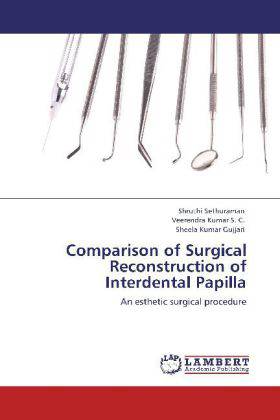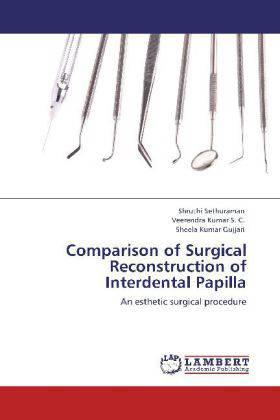
- Afhalen na 1 uur in een winkel met voorraad
- Gratis thuislevering in België vanaf € 30
- Ruim aanbod met 7 miljoen producten
- Afhalen na 1 uur in een winkel met voorraad
- Gratis thuislevering in België vanaf € 30
- Ruim aanbod met 7 miljoen producten
Zoeken
Comparison of Surgical Reconstruction of Interdental Papilla
An esthetic surgical procedure
Shruthi Sethuraman, Veerendra Kumar S C, Sheela Kumar Gujjari
Paperback | Engels
€ 58,45
+ 116 punten
Omschrijving
The presence of interproximal papilla between the maxillary anterior teeth is a key esthetic component. One of the major esthetic challenges in periodontal plastic surgery is the ability of reconstruction of the lost papilla in the maxillary anterior segment, the presence of which can result in esthetic and phonetic problems. The purpose of the study was to investigate the effectiveness of Robert Azzi technique and Han and Takei technique in reconstruction of interdental papilla. It also compared the effectiveness of the above two techniques in reconstruction of interdental papilla.14 patients who were periodontally healthy and had a loss of interdental papilla in the upper maxillary incisors were selected. The clinical parameters were recorded day 0, baseline, 6 and 12 months from baseline.A statistically significant improvement was seen in the papilla presence index and papillary height in both the groups. But on comparing both the techniques there was no statistical difference between the two.The results of this study showed that both the techniques were equally effective in successful reconstruction of interdental papilla and no technique was superior over the other.
Specificaties
Betrokkenen
- Auteur(s):
- Uitgeverij:
Inhoud
- Aantal bladzijden:
- 160
- Taal:
- Engels
Eigenschappen
- Productcode (EAN):
- 9783659117497
- Verschijningsdatum:
- 8/05/2012
- Uitvoering:
- Paperback
- Formaat:
- Trade paperback (VS)
- Afmetingen:
- 152 mm x 229 mm
- Gewicht:
- 244 g

Alleen bij Standaard Boekhandel
+ 116 punten op je klantenkaart van Standaard Boekhandel
Beoordelingen
We publiceren alleen reviews die voldoen aan de voorwaarden voor reviews. Bekijk onze voorwaarden voor reviews.











